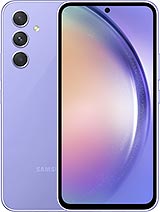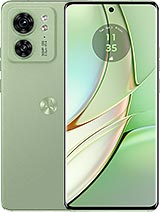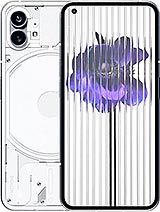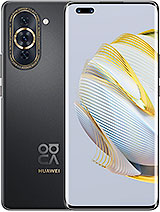Huawei nova 11 Pro review

Competition
We don't have official international pricing for the nova 11 Pro, nor is it all too widely available. But we did, after all, find legitimate retailers selling the 256GB/8GB version for €630-660. Let's explore what the competition has to offer before we draw our final verdict.

The Galaxy A54 is one of our go-to midrangers, and that one comes with significant savings - a base 128GB/8GB version goes for under €350, but even if you decide to match the nova's storage (which you don't necessarily need to, since the Galaxy has a memory slot), you'd be looking at just over €420 - so more than €200 in your pocket. The Galaxy is arguably not as fancy-looking, though that could be a point in its favor, depending on how you're inclined. The Galaxy wouldn't have quite as good a selfie camera as the nova 11 pro, and it doesn't charge as fast. It lasts a good deal longer on a charge, however, it has an IP67 rating, better speakers and a better display. A robust update policy and, well, actual Google apps support are also areas where the A54 wins.
The Motorola Edge 40 is also sort of a nova competitor, too. It's also a good €200 cheaper for a matching 256GB trim, and it's in many ways better. The Moto has an IP68 rating, and it's about as small and light as you can get in the midrange. The superior display and speakers, beefier chipset, somewhat better battery life, and the Google services support don't hurt its case either. The nova does score points for its fast charging and remains a strong favorite for taking selfies.
The Pixel 7a sounds like a sensible alternative too, though it too won't be challenging the nova for photos of yourself. The slow charging sets the Pixel back considerably; its ultrawide may be higher-res but lacks autofocus, the display maxes out at 90Hz, and is relatively small, while the phone itself isn't, and you can only have 128GB of storage with the Google midranger. It should be a way smoother software experience with the Pixel, though, the IP67 rating brings peace of mind, and there's around €150 to be saved by going that route.
Similar savings are to be had if you opt for the Nothing Phone (1) - a 256GB/8GB version goes for €500. Your selfies will suffer, sure, and majorly so, but you'll get other things in return. The beefed-up version of the SD778 chipset is one of them, so you'd be looking at a performance boost, a vastly superior ultrawide camera, generally better video capture, some of the smoothest Android software (with full Google support), and, of course, the unique LEDs on the back.
And after all this, we'd be inclined to circle back to the nova 10 Pro. The previous generation phone is very much the same thing, only cheaper - maybe to the tune of €100. The only objective downside is the slightly slower charging, but it's not really slow-slow. This leaves the slightly objectionable design of the previous generation to learn to live with.


![]()


Samsung Galaxy A54 • Motorola Edge 40 • Google Pixel 7a • Nothing Phone (1) • Huawei nova 10 Pro
Verdict
The nova 11 Pro does a lot of things right and has a couple of unique selling points, too - so it's not just an overall okay phone; it's an overall okay phone with a twist. The 100W charging brings speeds that are among the fastest you can get on any handset - midrange or flagship. Then there's the dual selfie camera that's properly great for stills - not so much because of it being a 'dual' camera as for the 60MP ultrawide unit, though the telephoto doesn't hurt either.

The rear cameras are also not half bad, and the seemingly modest ultrawide benefits greatly from having AF. The display is alright if hardly the brightest, battery life is in a similar 'not-amazing-not-bad' category, the chipset is dependable, and the in-house software is functional.
But the lack of Google Mobile Services remains a major limitation, and certain apps won't work on the nova 11 Pro, while others we'd be hesitant to try to get to work on it with the workarounds that are available.
And it's not just that either. For all its camera prowess, the phone isn't really a good video capture device on the back. The zoom selfie camera sounds like an interesting proposition, but only if you have a seflie stick or if you are a fan of a particular selfie video genre popularized by people dancing on Tik Tok. Then there's the fact that for the nova 11 Pro's asking price, you'd rightfully expect it to have a proper dust and water resistance rating, and it doesn't.
In the end, perhaps the nova 11 Pro's main issue is that it's too similar to the nova 10 Pro. And the things you may like the new model for, you can get in the older one at a lower price. It's not that the nova 10 Pro is a bargain either, but while there's still remaining stock of it, the 11 Pro doesn't make a ton of sense.
Pros
- Attractive and fresh design, the flashiness of the previous model has been toned down.
- Great web browsing and video playback battery life.
- Class-leading fast charging.
- Great chipset performance and good stability in games.
- Excellent photo quality from the rear cameras, day and night.
- Outstanding selfie photos, good selfie videos.
Cons
- Getting some popular apps and games can be a hassle, and some will refuse to work at all due to the absence of Google Mobile Services support.
- No IP rating.
- No 5G connectivity.
- Unimpressive video recording from the rear cameras.
- The portrait selfie cam magnification makes handheld shots really hard.
Reader comments
- Anonymous
- 06 May 2024
- vaS
Gbox now supports native Play store installs just like Aurora, which the previous user failed to mention.My banks have App Gallery versions because we Huawei users asked them to make one. And those that aren't on App Gallery are usable even with...
- Anonymous
- 06 May 2024
- vaS
Strange. My sideloaded banking apps work. Some even had App Gallery versions. Maybe it's an issue with your devs.
- Anonymous
- 28 Jul 2023
- g4b
>imagine wanting gliomas